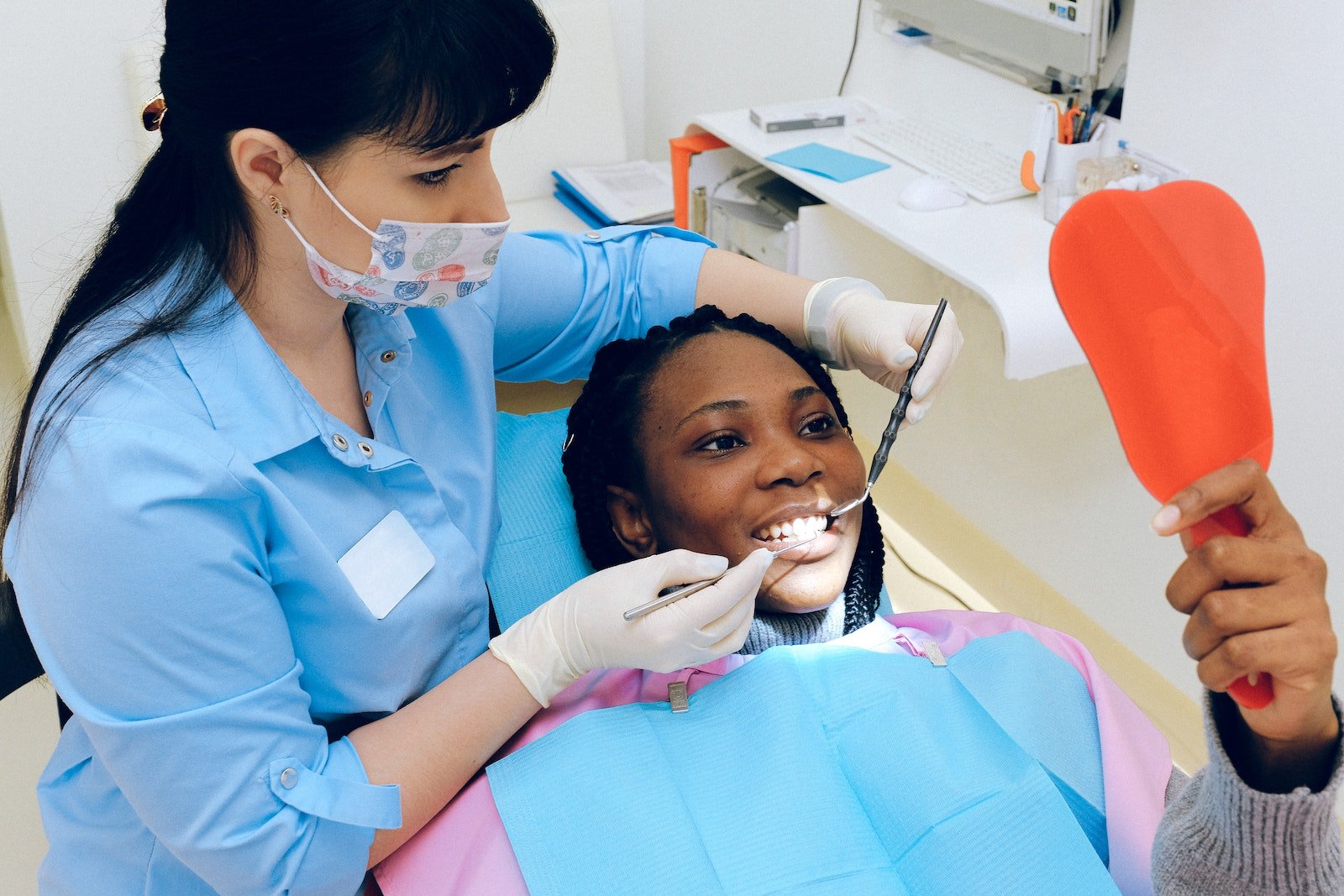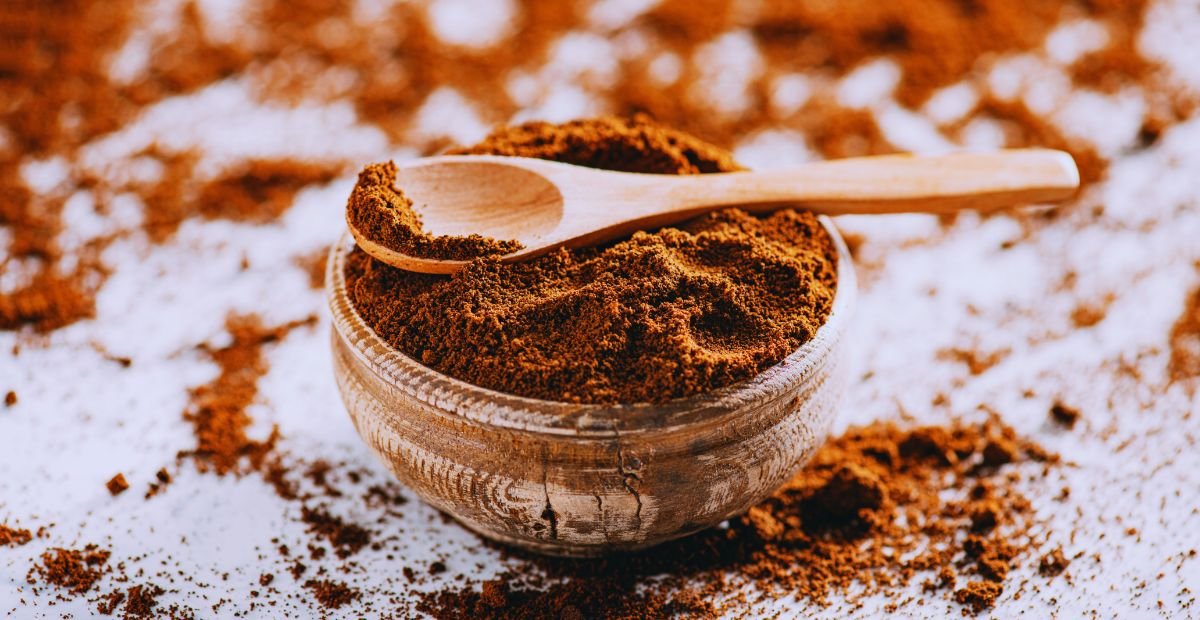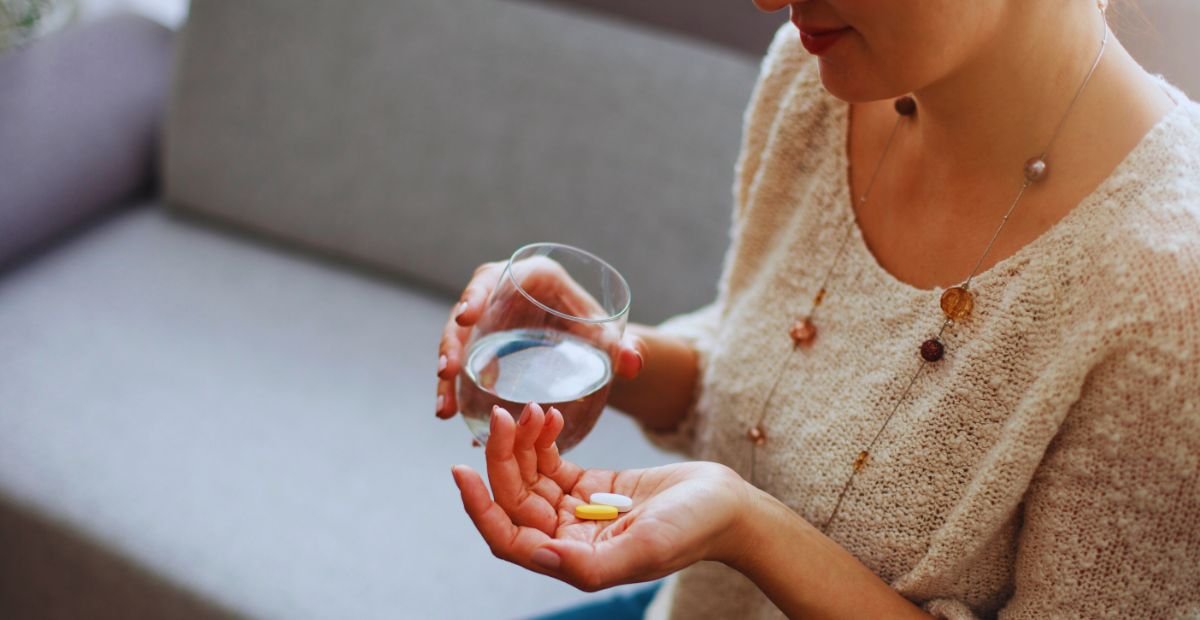Best Way to Remove Coffee Stains from Teeth | 5 Methods

A steaming cup of coffee in the morning is a ritual for many, but what often accompanies this beloved beverage are the persistent concerns about coffee stains on your teeth. These stains, a result of the dark and robust coffee that we enjoy, can leave an unwelcome mark on our smiles.
If you’re wondering about the best way to remove coffee stains from teeth, you’ve come to the right place. In this guide, we’ll explore effective methods to combat those stubborn stains and regain the confidence to drink coffee without worrying about their impact on your pearly whites.
Moreover, we’ll explore some tips to help you maintain a brighter, stain-free smile. Let’s delve into the world of stain removal and discover how to keep your teeth sparkling while savoring your favorite brew.
Why Does Coffee Stain Teeth? The Science Behind the Java Jitters
For many of us, coffee is the lifeblood that kickstarts our day. That steaming cup of dark elixir not only provides a much-needed energy boost but also a comforting ritual.
However, there’s one aspect of coffee consumption that often gives us pause: the potential for coffee to stain our teeth. Have you ever wondered why coffee stains teeth? Let’s dive into the science behind those coffee stains and explore the factors at play.
1. Tannins: The Culprits
The primary reason coffee leaves its mark on your pearly whites is due to the presence of tannins. Tannins are natural compounds found in various plant-based foods and beverages, including coffee, tea, red wine, and some fruits like grapes and apples. Tannins are known for their astringent properties, which can cause a dry, puckering sensation in your mouth.
In the context of teeth staining, tannins are the main culprits. They have a unique ability to bind to proteins, including those present in your saliva and on the surface of your teeth.
When tannins bind to these proteins, they create a sticky film on your tooth enamel, which is the hard, protective outer layer of your teeth. This film then acts as a canvas for other compounds in coffee to adhere to, leading to the formation of coffee stains.
2. Acidity Matters
Another factor contributing to coffee stains is its acidity. Coffee’s pH level ranges from 4 to 5, making it inherently acidic. Acidic foods and beverages can weaken tooth enamel, the strong, protective shell that shields your teeth. Enamel loses strength with time and is more prone to stains.
Additionally, acidic foods and beverages can soften the enamel temporarily, making it easier for stains to penetrate the tooth surface. While this softening is usually temporary, it can be problematic when combined with the staining properties of tannins.
3. Dark Pigments
The color of your coffee matters, too. Dark-colored coffee, such as espresso or black coffee, contains more pigments that can adhere to your teeth. These pigments, which are responsible for coffee’s rich brown and black hues, can become trapped in the sticky film created by tannins, leading to noticeable discoloration.
4. How You Consume Coffee
The way you consume coffee can also influence the extent of staining. Sipping coffee slowly over an extended period, allowing it to linger in your mouth, increases the exposure of your teeth to coffee’s staining compounds. Using a straw or drinking water alongside your coffee can help minimize this exposure.
5. Frequency and Duration
Finally, the frequency and duration of coffee consumption play a role. Habitual coffee drinkers who consume multiple cups throughout the day over an extended period are more likely to develop coffee stains compared to occasional drinkers.
While coffee stains may be a common concern, they can be managed and minimized through good oral hygiene practices, regular dental checkups, and by being mindful of your coffee consumption habits. So, continue enjoying your daily dose of coffee, but don’t forget to take steps to protect your smile from those persistent coffee stains.
How to Remove Coffee Stains from Teeth: 5 Effective Methods
Coffee is a beloved morning ritual for many, but its dark pigments can leave unsightly stains on your teeth. Fear not, though, as there are several effective methods to help you regain your pearly whites. Here, we’ll explore five proven techniques for removing coffee stains from teeth.
1. Whitening Toothpaste
Whitening toothpaste is a readily available and easy-to-use option for tackling coffee stains. These toothpastes contain mild abrasives that help scrub away surface stains. Look for toothpaste specifically formulated for whitening and stain removal, and use it as part of your regular oral care routine. Be patient, as it may take a few weeks to see noticeable results.
2. Whitening Strips/Trays
Over-the-counter whitening strips and trays are another popular choice. They usually contain a peroxide-based whitening gel that can penetrate enamel to lift stains beneath the surface.
Follow the product’s instructions carefully, and be consistent with your usage for best results. These products often provide more noticeable improvements compared to whitening toothpaste.
3. Professional Dental Whitening
For a more rapid and dramatic transformation, consider professional dental whitening. Dentists offer in-office treatments and at-home kits that are custom-tailored to your teeth.
In-office treatments yield almost immediate results, while at-home kits offer convenience and excellent results when used as directed. Professional dental whitening can effectively remove deep-set coffee stains, providing you with a brilliantly white smile.
4. Brushing with Baking Soda and Hydrogen Peroxide
A natural and cost-effective remedy for coffee stains involves using baking soda and hydrogen peroxide. Create a paste by mixing a small amount of baking soda with hydrogen peroxide until you have a toothpaste-like consistency.
Brush your teeth gently with this mixture, being careful not to scrub too vigorously, as baking soda is abrasive, and excessive use can damage enamel. Use this method sparingly, perhaps once a week, to avoid overuse.
5. Upgrade to an Electric Toothbrush
An electric toothbrush can be a game-changer when it comes to stain removal. These brushes are typically more effective at removing plaque and surface stains compared to manual toothbrushes. Some electric toothbrushes even come with whitening modes that are specifically designed to help lift and remove stains. Consider investing in an electric toothbrush for improved oral hygiene and stain prevention.
Remember that while these methods can help remove coffee stains from teeth, preventing future staining is equally important. Be mindful of your coffee consumption, drink water alongside your coffee to rinse away pigments, and maintain regular dental checkups for professional cleanings and advice on maintaining a bright smile. With patience and consistency, you can enjoy your coffee and a dazzling smile at the same time!
Does Adding Cream to Coffee Reduce Staining?
If you’re a coffee enthusiast, you might be concerned about the potential for coffee to stain your teeth. One popular belief is that adding cream to your coffee can help reduce staining. But does this claim hold true? Let’s dive into the science and explore whether adding cream to your coffee can indeed be a stain-preventing strategy.
The Coffee-Staining Culprits
Coffee is notorious for staining teeth due to two main factors: its color and its acidity.
- Color: Coffee is a dark-colored beverage, and the pigments responsible for its deep hue, known as chromogens, can stick to tooth enamel, leading to discoloration over time.
- Acidity: Coffee is also acidic, and acid can weaken tooth enamel, making it more porous and susceptible to staining from other foods and drinks.
How Cream Might Help
Adding cream to your coffee introduces a fatty component that could potentially counteract staining in a couple of ways:
- Dilution: When you add cream to your coffee, you’re effectively diluting the concentration of coffee pigments in the beverage. This can make the drink less likely to adhere to your teeth.
- Barrier Effect: The fats in cream might create a thin barrier on the surface of your teeth, reducing the direct contact between the coffee and your enamel. This barrier could act as a protective shield against staining.
The Limitations of Cream
While adding cream to your coffee may offer some protection against staining, it’s important to understand its limitations:
- Cream Fat Content: Not all creamers are created equal. The effectiveness of cream in reducing staining may vary depending on the fat content. Higher-fat creamers, like heavy cream, might provide more protection than low-fat or non-dairy alternatives.
- Overall Dental Hygiene: Adding cream alone is not a substitute for good dental hygiene practices. Regular brushing, flossing, and dental checkups remain essential for maintaining oral health and minimizing staining.
- Other Factors: Coffee staining can also depend on individual factors such as tooth enamel strength, genetics, and the overall health of your teeth.
Additional Tips for Preventing Coffee Stains
If you’re concerned about coffee stains on your teeth, here are some additional tips:
- Drink Water: Sipping water alongside your coffee can help wash away coffee residues and neutralize acids, reducing staining potential.
- Use a Straw: Drinking through a straw can minimize direct contact between coffee and your teeth.
- Regular Dental Checkups: Professional dental cleanings and checkups can help remove existing stains and address any concerns about staining.
- Whitening Products: Consider using whitening toothpaste or seeking professional teeth whitening treatments to maintain a bright smile.
In conclusion, while adding cream to your coffee may offer some protection against staining, it’s not a foolproof solution. Practicing good dental hygiene, being mindful of your coffee consumption, and considering other preventative measures are all essential for maintaining a radiant smile while enjoying your beloved coffee.
Preventing Coffee Stains on Teeth: Tips for a Brighter Smile
For many of us, that morning cup of coffee is an essential ritual that jumpstarts our day. But along with its much-needed caffeine boost, coffee often brings along an unwanted guest – teeth stains.
Coffee stains on teeth are a common concern among coffee lovers, but the good news is that there are several effective strategies you can adopt to prevent and minimize these stains while still enjoying your favorite brew.
1. Drink Water Alongside Your Coffee:
One of the simplest and most effective ways to prevent coffee stains is to consume water alongside your coffee. Water helps rinse away coffee particles and dilutes the staining compounds found in coffee. Sip water between sips of coffee to help minimize the impact on your teeth.
2. Use a Straw:
Using a straw when drinking coffee can be a game-changer for preventing coffee stains. It allows the coffee to bypass your front teeth, reducing direct contact with the staining agents. Opt for reusable or eco-friendly straws to reduce environmental impact.
3. Brush Your Teeth:
Brushing your teeth after consuming coffee is an excellent way to prevent stains from setting in. If possible, wait at least 30 minutes after drinking coffee to brush, as immediate brushing can potentially damage softened enamel. For efficient cleaning, use fluoride toothpaste and a soft-bristle toothbrush.
4. Consider Whitening Toothpaste:
There are numerous whitening toothpaste options available on the market that can help combat coffee stains. These toothpastes contain mild abrasives and ingredients that break down surface stains. Incorporate a whitening toothpaste into your daily oral hygiene routine for best results.
5. Floss Regularly:
Don’t underestimate the importance of flossing. Coffee particles can get trapped between your teeth, leading to stains. Regular flossing helps remove these particles, keeping your teeth cleaner and less prone to staining.
6. Rinse with Mouthwash:
Using an alcohol-free, antiseptic mouthwash can help freshen your breath and reduce the impact of coffee stains. Look for mouthwashes that promote enamel health and stain prevention.
7. Professional Dental Cleanings:
Regular dental check-ups and professional cleanings are essential for maintaining oral health and preventing coffee stains from becoming deeply embedded. Your dentist can remove stubborn stains and provide guidance on stain prevention.
8. Choose a Low-Acidity Coffee:
High-acid coffees are more likely to contribute to teeth staining. Consider switching to a low-acid coffee blend if you’re particularly concerned about stains. Additionally, cold-brew coffee tends to be less acidic than hot-brewed coffee.
9. Practice Moderation:
Limit your coffee intake, especially if you’re prone to staining. Drinking smaller, less concentrated servings of coffee can help reduce the exposure of your teeth to staining compounds.
10. Maintain a Balanced Diet:
Eating a diet rich in fruits and vegetables can help counteract the staining effects of coffee. Crunchy, high-fiber foods like apples and celery can naturally clean and scrub your teeth.
In conclusion, enjoying your daily coffee doesn’t have to mean sacrificing a bright, white smile. By incorporating these preventive measures into your routine and being mindful of your coffee consumption, you can continue to indulge in your coffee ritual while preserving the natural beauty of your teeth. Remember, a healthy smile is a reflection of your overall well-being, so keep those coffee stains at bay and smile confidently.
Other Foods and Drinks That Stain Teeth
When we think about foods and drinks that can stain our teeth, coffee often comes to mind first. However, there’s a wide array of other culprits lurking in our diets that can leave unsightly stains on our pearly whites. Let’s explore some of these common offenders and learn how to enjoy them while minimizing their impact on your smile.
1. Tea:
Tea, like coffee, contains tannins that can lead to staining. While herbal teas tend to have a lower staining potential, black and green teas can still contribute to discoloration. If you’re a tea enthusiast, try sipping through a straw or rinsing with water afterward to reduce staining.
2. Red Wine:
The rich pigments in red wine can leave your teeth with a less-than-desirable hue. The acid in wine also softens enamel, making it more susceptible to staining from other foods and drinks. Consider drinking water alongside your glass of wine and maintaining good oral hygiene to counteract its effects.
3. Dark Berries:
Berries such as blueberries, blackberries, and raspberries are packed with antioxidants and health benefits, but they can also stain your teeth due to their deep, vibrant colors. Enjoy these nutritious fruits, but remember to rinse your mouth or brush your teeth afterward.
4. Tomato-Based Sauces:
Tomato-based sauces, including pasta sauce and ketchup, are highly acidic and can cause tooth staining. They can also erode enamel, making it easier for other staining substances to penetrate. Consume them in moderation and consider cheese or dairy products alongside them to help neutralize acidity.
5. Curry:
Curry dishes are delicious, but their intense pigmentation can lead to teeth staining. Try pairing curry with crunchy vegetables like carrots or celery, which can help scrub away some of the staining agents.
6. Cola and Dark Sodas:
Cola and dark sodas are double trouble for your teeth. They are acidic and contain dark coloring agents, making them a potent combination for staining. Opt for lighter soda options or better yet, choose water or herbal tea as your go-to beverages.
7. Soy Sauce:
Soy sauce, commonly used in Asian cuisine, is a dark, highly pigmented condiment. It’s best to use it sparingly or opt for low-sodium alternatives to minimize its staining effects.
8. Sports Drinks:
Sports and energy drinks often contain high levels of acids and sugars, which can damage enamel and contribute to staining. If you consume these beverages, consider rinsing your mouth with water afterward and choosing options with lower sugar content.
9. Beetroot:
Beets, while nutritious and delicious, can also stain teeth due to their vibrant red color. Enjoy them as part of a balanced diet, but be mindful of their staining potential.
10. Tobacco Products:
Smoking and using smokeless tobacco can lead to severe tooth staining and a host of other dental problems. Quitting tobacco use is not only beneficial for your overall health but also for maintaining a white smile.
In conclusion, while it’s not necessary to avoid these foods and drinks altogether, being mindful of their staining potential and practicing good oral hygiene can help you enjoy them without compromising the brilliance of your smile. Regular dental check-ups and professional cleanings can also assist in keeping your teeth stain-free and healthy.
Overcoming Coffee Stains on Teeth
Before we delve into the solutions, let’s understand why coffee stains our teeth. Coffee contains compounds called tannins, which readily bind to tooth enamel. Over time, these tannins can cause discoloration. Additionally, coffee is acidic, and acidic beverages can weaken enamel, making it more susceptible to staining from other foods and drinks.
1. Regular Dental Hygiene
The first and most crucial step in combating coffee stains is a solid dental hygiene routine. Make sure you:
- Brush Regularly: Brush your teeth at least twice a day, preferably after consuming coffee. This helps remove surface stains before they set in.
- Floss Daily: Flossing helps remove plaque and stains between your teeth and along the gumline.
- Use Mouthwash: Rinsing with an alcohol-free mouthwash can help reduce staining and freshen your breath.
2. Water Is Your Ally
Sip water alongside your coffee. Water helps neutralize acids and wash away coffee residue, reducing the potential for staining. Swish some water in your mouth after finishing your coffee to minimize the impact.
3. Use a Straw
Consider using a straw when drinking your coffee. This simple trick can help bypass direct contact with your teeth, significantly reducing the chances of staining.
4. Whitening Toothpaste
There are various whitening toothpaste options available that can help remove surface stains. Look for toothpaste designed to combat coffee or tea stains and use it regularly to maintain a brighter smile.
5. Baking Soda and Hydrogen Peroxide
Baking soda is a natural abrasive that can gently scrub away stains from your teeth. Create a homemade paste by mixing baking soda with a small amount of hydrogen peroxide. Brush your teeth with this mixture, but be cautious not to use it too frequently, as excessive use can wear down enamel.
6. Professional Teeth Whitening
For stubborn coffee stains or if you’re seeking a significant improvement, professional teeth whitening is a great option. Dentists offer both in-office treatments and at-home kits to safely and effectively lighten and remove deep-set stains.
7. Regular Dental Checkups
Routine dental checkups are essential for maintaining your oral health and addressing persistent staining issues. Dentists can provide professional cleanings and offer advice on how to maintain a bright, stain-free smile.
In conclusion, coffee stains on teeth don’t have to be an insurmountable problem for coffee lovers. By incorporating these strategies into your daily routine and being mindful of your coffee consumption, you can enjoy your favorite brew and greet the world with a confident, radiant smile. Remember, a bright smile is a reflection of a healthy you!
Frequently Asked Question
How quickly can coffee stains be removed from your teeth?
To quickly remove coffee stains from your teeth, you can try brushing your teeth with a whitening toothpaste or a mixture of baking soda and water. These methods can help lift surface stains. However, for more stubborn stains, it may take some time and consistent effort.
Do coffee stains on teeth go away?
Coffee stains on teeth can fade and improve with proper oral hygiene and stain removal techniques. However, deep-set or long-standing stains may require professional dental treatments for complete removal.
How can I remove brown stains from my teeth?
Brown stains on teeth, often caused by coffee, tea, or tobacco, can be removed by using whitening toothpaste, teeth whitening kits, or professional dental treatments. Regular dental cleanings can also help prevent and address these stains.
What is the easiest way to remove stains from teeth?
The easiest way to remove stains from teeth is by maintaining a consistent dental hygiene routine, which includes brushing at least twice a day with a whitening toothpaste, flossing daily, and using mouthwash. Drinking water alongside stain-causing beverages like coffee can also help prevent stains from setting in.
How do dentists remove coffee stains?
Dentists can remove coffee stains through professional teeth cleaning and whitening procedures. Dental cleaning involves the use of special tools and pastes to remove surface stains and plaque. Dentists may also offer teeth whitening treatments, such as in-office whitening or take-home kits, to address deeper stains and discoloration.
Can baking soda whiten teeth?
Yes, baking soda can help whiten teeth to some extent. It is a mild abrasive that can gently scrub away surface stains and plaque. You can use a paste made from baking soda and water to brush your teeth occasionally.
However, be cautious not to overuse it, as excessive abrasion can harm tooth enamel. Consult your dentist for guidance on using baking soda for teeth whitening. For more effective and safer results, professional teeth whitening is often recommended.
Conclusion
In conclusion, when it comes to dealing with coffee stains on your teeth, there are several effective ways to remove coffee stains from teeth and maintain a bright, confident smile. Whether you’re using specialized dental treatments, home remedies, or simple preventive measures, taking action to get rid of coffee stains is key.
Remember, consistent dental care and wise choices in your daily coffee consumption can go a long way in preventing coffee stains from taking hold of your teeth. By following the best ways to remove coffee stains from your teeth, you can enjoy your coffee guilt-free and flash a radiant smile that’s truly stain-free.



